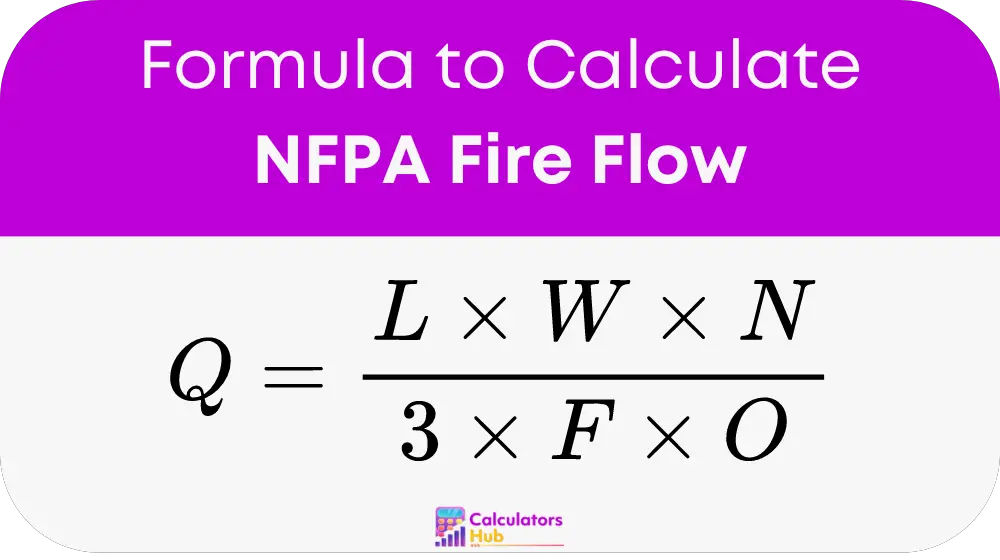The NFPA Fire Flow Calculator plays a critical role in firefighting and safety planning. It calculates the minimum amount of water required (in gallons per minute) to extinguish a fire in a building based on various factors, including the size of the building and the intensity of the fire. This tool is essential for firefighters and safety planners to ensure that they have sufficient water supply to handle emergencies.
Formula of NFPA Fire Flow Calculator
The NFPA formula for determining fire flow is as follows:

Where:
- Q is the required fire flow in gallons per minute (GPM).
- L is the length of the building in feet.
- W is the width of the building in feet.
- N is the number of burning floors.
- F is the fire involvement factor, reflecting the percentage of the building involved in the fire, expressed as a decimal.
- O is the occupancy factor, a multiplier that adjusts the flow based on the type of occupancy.
Steps to Calculate the Fire Flow:
- Calculate the Base Fire Flow: Multiply the length, width, and number of floors, then divide by three.
- Adjust for Fire Involvement: Multiply the base flow by the fire involvement factor.
- Adjust for Occupancy Type: Finally, adjust the flow by the occupancy factor.
Useful Table
For quick reference, here is a table with typical values for common scenarios:
| Building Size (ft²) | Fire Involvement Factor | Occupancy Factor | Required Fire Flow (GPM) |
|---|---|---|---|
| Example values | Example values | Example values | Calculated values |
This table allows users to estimate fire flow without detailed calculations for standard situations.
Example of NFPA Fire Flow Calculator
Let's consider a hypothetical scenario: a building is 100 feet long by 50 feet wide with two burning floors, 50% fire involvement, and a standard occupancy factor. Using our formula:
Q = (100 x 50 x 2) / 3 x 0.5 x 1 = 1667 GPM
Most Common FAQs
The number of burning floors is typically determined by visual assessment or reports from the scene. It refers to the floors actively involved in the fire.
Occupancy factors vary based on building use, such as residential, commercial, or industrial. Each type has a specific multiplier to reflect fire risk and necessary firefighting resources.
Building shape can influence the calculation if it significantly deviates from a standard rectangular form. Adjustments might be needed for L and W measurements to accommodate unique architectural features.